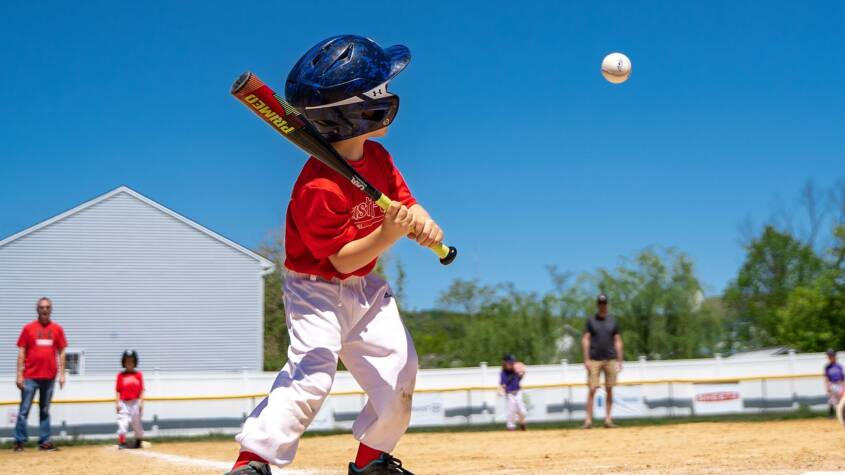Custom Bats: The Ultimate Guide to Choosing the Perfect Bat for Your Game
Custom bats have become increasingly popular among baseball and softball players eager to enhance their performance on the field. These personalized bats not only offer a unique design but also allow players to choose specifications tailored to their individual style and needs. Custom bats can significantly improve a player’s game by providing better grip, balance, and swing mechanics.
When selecting a custom bat, players can consider factors such as weight, length, and material. This level of personalization helps athletes feel more comfortable and in control during their at-bats. Custom bats often lead to improved confidence, as players can showcase their identity while benefiting from technology designed for optimal performance.
Exploring custom bats opens up a world of possibilities for both casual players and serious athletes. With a variety of brands and styles available, players can find the perfect bat to match their skill level and preferences. Engaging with the custom bat market can transform a player’s experience, making it more enjoyable and productive.
Designing Custom Bats
Custom bats are crafted to meet individual player needs, emphasizing materials, dimensions, grip, and aesthetics. Each aspect plays a crucial role in performance and personal satisfaction.
Choosing the Right Materials
The choice of materials is fundamental when designing a custom bat. Common options include wood types such as maple, birch, and ash. Each wood type affects the bat’s weight, durability, and feel.
- Maple: Known for its hardness and durability. It provides a solid swing but can be heavier.
- Birch: Offers a balance of flexibility and hardness, making it popular among players looking for a mix of performance and control.
- Ash: Lighter than maple and birch, providing excellent shock absorption but may not be as durable.
Consideration of composite materials is essential for specific use cases, particularly in youth and amateur leagues, where lightweight bats can enhance speed and control.
Understanding Bat Dimensions
Bat dimensions influence performance characteristics significantly. The standard length ranges from 30 to 34 inches, with the weight impacting swing speed and control.
- Weight Distribution: The location of mass (end-loaded vs. balanced) affects swing dynamics. End-loaded bats lend power, while balanced bats enhance bat speed.
- Barrel Diameter: Common diameters range from 2.5 to 2.75 inches. A larger barrel increases the sweet spot but may reduce control.
Players should select dimensions based on their hitting style and preferences, ensuring the bat complements their unique swing mechanics.
Customizing Grip and Handle
The grip and handle are crucial for comfort and control during swings. Custom grips can enhance hold and reduce vibration.
- Grip Material: Options include rubber, leather, or synthetic composites. Rubber tends to absorb shock better, while leather provides a traditional feel.
- Handle Thickness: Customizing the thickness can accommodate different hand sizes, improving overall grip.
Players should also consider textured finishes, as these can provide additional friction and control during swings.
Aesthetics and Personalization
Personalization adds flair and identity to custom bats. Players can select colors, logos, and patterns to reflect their style.
- Color Options: Stains, finishes, and paint provide varied looks. Players may prefer traditional wood finishes or bold, modern colors.
- Engravings and Logos: Personal messages or initials can be added for uniqueness.
Balancing aesthetics with function is vital; players should ensure that any design elements do not interfere with grip or swing performance.
Manufacturing Process
The manufacturing of custom bats involves meticulous craftsmanship and strict quality control measures to ensure each piece meets the desired specifications. The process includes various techniques that impact performance and durability.
Craftsmanship and Techniques
The creation of custom bats begins with selecting high-quality wood, typically maple, ash, or birch. The wood is then cut into billets, which are the raw materials for shaping the bat. Experienced craftsmen utilize lathes to carve the bat into its final shape, focusing on the barrel size, handle thickness, and overall weight.
Key Techniques:
- Turning: This involves spinning the wood while cutting it to the desired form.
- Sanding: The surface is smoothed for better grip and aesthetics.
- Finishing: Various coatings are applied for durability and protection against moisture.
These techniques require skill and precision to produce a bat that performs well while feeling comfortable to the player.
Quality Control
Quality control is a crucial aspect of the manufacturing process. Each bat undergoes multiple inspections at various stages to ensure it meets performance standards and is free from defects.
Key steps in quality control include:
- Visual Inspection: Checking for surface imperfections and structural integrity.
- Weight and Balance Tests: Ensuring the bat’s weight is within specified limits and that it is balanced for optimal swing.
- Performance Testing: Bat performance is evaluated using controlled tests to assess distance and exit velocity.
Maintaining high quality standards is essential for the reputation of custom bats in competitive environments.
British Virgin Islands Company Registry Explained: Key Facts and Procedures
The British Virgin Islands company registry is a centralized system that maintains detaile…













